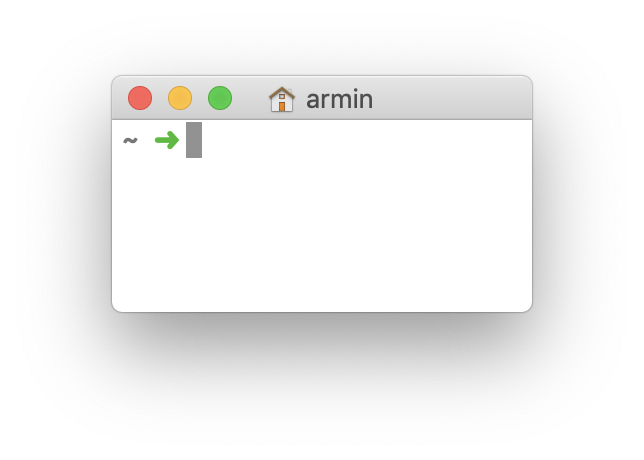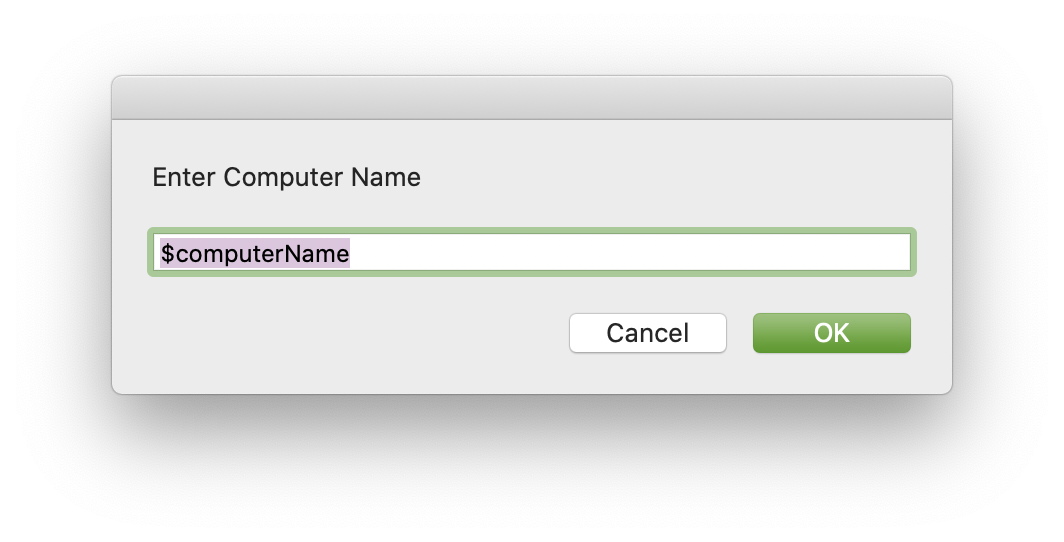By default the read command will take input from stdin (standard input)and store it in a variable called $REPLY. The default delimiter for read is a newline, so it will accept input until you hit the enter key. Store Input in a Variable Read always stored your input in a variable. May 12, 2020 Before you continue, reset your BASH prompt to the default. If you used the export command, log out and log back in. If you edited your /.bashrc file, place a # sign before each edit you made and save the file. The BASH prompt contains four different values: PS1, PS2, PS3, and PS4. Apple replaces bash with zsh as the default shell in macOS Catalina. As a developer I use zsh daily but I have seen lot's of developers that want to use the.
One way to provide input to shell scripts (as well for programs written in other programming languges than the shell) is by providing arguments upon starting the program. That is useful and intersting. In this post, however, we will see means to provide input to a shell script that is already running. That is, the script runs, and then at some point it needs to ask the user for input so it can perform whatever actions are needed to fulfill its purpose in life!
Let’s have fun, shall we‽
Read two numbers and print the result of dividing the first by the second:

Don’t get confused here! It may look like we are passing arguments to the script, but we are not. Instead, we are justing using Shell herestrings (<<< '10 3') to provide input to the program after it is already running. It is the same as if we did something like this:
Read two numbers into the variables x and y, then sum them and store the result in the varaible result, and finally print the result to the output.
Note
We used the bc program (just for fun) to do the math so it also works with floating pointer numbers. Bash itself can only work with integers.
The user may edit, or completely remove the default value at the prompt and type something entirely different. Still, if they just hit <RET>, that default value is used.
read has a -t command line option that we can use to cause the script to continue after N seconds even if the user doesn’t hit <RET>.
But what if we do not hit <RET> and wait for the time to pass and the script to just continue execution?
When we run the script, we intentionally let the 3 seconds pass without hitting <RET>. The result is that username is not assigned any value and the printf line gives the output you see above, that is, it prints nothing for username because it is empty.
Still, there are ways to circumvent that “limitation”. We can make use of the || operator to assign a value to the variable username in case the read expressions return a false value.
Let’s study this example:
To understand how the read line works, recall that when you run a command, it returns an status value. That status value can be read through the $? special variable in bash. Zero means the command succeeded, and any other value means there was some sort of error, and it depends each program. An example:
As it can be seen, if ls succeeds in listing the file .gititnore, its status value is 0 (true). If the file does not exist, it returns 2 (one of the many possible falsy value codes for ls; check its man page).
In the line:
The || operator checks for the return value of the read command, and if it returns a non-zero value (indicating some sort of failure, i.e. no input is given), bash then proceeds to the expression username=Yoda.
Note, however, that this doesn’t work:
You may think, “Okay, if the user doesn’t hit <RET> before the three seconds, the variable username will contain the original value.” Incorrect! username will be overridden with nothingness. So, using the || approach is the way to go for something like this.
There is yet another way to provide a default value for input and have a timeout that works no matter whether the user hits <RET> or not: using Bash’s parameter expansion.
The expression username=${username:-Yoda} means, “if username has a value, just use that value, otherwise, use ‘Yoda’ instead.”
If you want to check on the command line how this type of expansion works, try this:
In the first echo line, we used a jedi variable that had not been previously set; it was empty. Since it was empty, the shell used the default value of ‘Obiwan Kenobi’ and that was the output of that first echo.
Then, we set the variable jedi to the value ‘Luke Skywalker’. When we tried the second echo command, the shell saw that jedi had a value, and printed that value instead of using the default one.
Basically, it is like this:

In this example, we prompt the user for a “Yes/No” type of question to decide if the script should do one thing or another. We also handle the case for when they type unacceptable input.
We read the user input into the answer variable and then use it in a Bash’s case statement to decide what to do based on that input.
Because our first test is
[Yy]*, it means the user may type either an uppercase or lowercase “y” followed by any other character, so they may type something like “Yessss!”, and it would still match.The reasoning explained above is the same for the pattern
[Nn]*. All that matters is that the input starts with either an uppercase or a lowercase “n”.Finally, if neither of the first two patterns match anything, we have a catch all pattern
*that handles uncacceptable input.
Note
Macos Bash Prompt For Input With Default Ip
This pattern matching stuff is a subject for another (TODO) post.
Specifically for man pages, you can always open them in a browser. Do something like:
And then look in the index for the specific section you want and click the link.

read

Read the man page of the read builtin:
Or look for it in the SHELL BUILTIN COMMANDS in the bash manual. This works with the less pager:
and scroll until you see the read entry. If your pager is set to something other than less, just read its help/man pages to figure out how to search in them. To try with less even with something else set as your default pager program, you can just do this:
bc
The man page:
Or the more verbose, informative and with examples, info page:
Bash Parameter Expansion
In the man page:
Macos Bash Prompt For Input With Default Download

Macos Bash Prompt For Input With Default Value
Or more especifically in